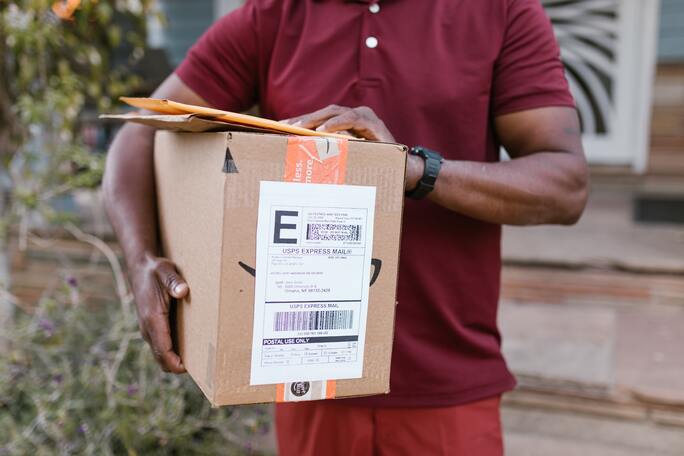At the end of 2018, I published an academic paper with Dr. Patricia Daugherty of Iowa State called “Logistics and distribution innovation in China.” We studied China as a harbinger of things to come to the Western World as China was at the forefront of two mega-trends, eCommerce and urbanization. One of the most surprising findings was that while there are over 35,000 logistics providers in China, JD.com and Alibaba create the core logistics system. While they don’t necessarily own the logistics assets, they effectively control the movement of most eCommerce purchases. These companies were also the leading investors in logistics capabilities.
The Rise of the Retailer Logistician
This was a perspective-changing revelation. I grew up in a world where the Big 3 – UPS, FedEx, and the USPS – dominated small package delivery. What was this alternate world in China where the largest investors in logistics were not logistics companies; they were retailers? It became clear that as eCommerce continues to take a more significant chunk of total retail, it moves from being another sales channel to core business. Logistics is a natural extension of the retail value proposition, the equivalent of a great in-store checkout experience. In this light, we predicted that we would see a similar trend in the Western World as eCommerce continued to grow.
Fast-forward to 2021 in the U.S., and the rise of the retailer logistician is in full swing. While the Covid-19 pandemic has stalled urbanization, eCommerce growth has accelerated. According to a Digital Commerce 360 analysis, U.S. eCommerce grew 44% in 2020 and represented 21.3% of total retail, about where China was back in 2018. Booming sales for retailers considered “essential” to the economy under Covid were a big story in 2020. Walmart grew its eCommerce sales 79% in the fiscal year ending January 31, 2021. Amazon’s online store revenue grew 40%, only to be outpaced by third-party seller growth of 50% on the platform. Meanwhile, Target grew online sales 193% for the November/December period compared with last year. While these numbers were impressive, the more significant long-term story is investment and growth in retailer logistics capabilities.
2020 was the year that retailers took control of logistics. During the pandemic, eCommerce was not just another channel to market; it was a lifeline. Simultaneously, the logistics networks that retailers have always counted on were capacity constrained, and shipping rates rapidly increased. In this environment, innovation at retailers flourished; it had to…and the money followed. We’re now seeing the transformation of eCommerce logistics control move to retailers, echoing China’s changes through the 2010’s.
 Amazon spent $44 billion to fulfill their one-day Prime commitment in 2020, enabling them to deliver 58% (2.3 billion) of their parcels in 2019. Amazon is no longer the tail wagging the dog; they are the dog. Competing retailers are also investing in logistics at a rapid pace:
Amazon spent $44 billion to fulfill their one-day Prime commitment in 2020, enabling them to deliver 58% (2.3 billion) of their parcels in 2019. Amazon is no longer the tail wagging the dog; they are the dog. Competing retailers are also investing in logistics at a rapid pace:
- Walmart expanded ship-from-store to over 2,500 locations in the U.S. and in September launched Walmart+. In only two weeks, about 11% of Americans signed up for the service.[1] Walmart will focus on its supply chain as part of a $14 billion fiscal year 2022 capital investment commitment.
- Costco purchased Innovel Solutions for $1B to enhance its capability sets in multiple areas, including last-mile delivery and installation for appliances and other bulky items.
- Target’s unified inventory investment paid off in November and December, with about 95% of Target’s sales fulfilled from its stores. Curbside pickup grew more than 500%.
- Lowe’s invested in 50 cross-docks, 7 bulk D.C.s, and 4 eCommerce facilities to improve its 2-day delivery performance across the U.S.
- Best Buy announced that 99% of its customers can now get free next-day delivery on thousands of items.
Of the top 500 retailers in 2019, only 19 offered curbside pickup. By August of 2020, that number grew to 121.[2] The retail landscape is changing!
Critical Retailer Advantages in Logistics
U.S. retailers have two structural advantages over incumbent carriers that will be difficult, but not impossible, to mitigate. First, they have access to information about eCommerce shipments when the consumer hits the buy button, whereas carriers don’t know about a shipment until the shipper lets them know that it’s ready to be picked up. The value of this early access to consumer-level information is critical in a time-based industry. More importantly, consumers ultimately call the shots in the digital economy. Increasingly, it will be the company that owns the information about consumers, not the logistics assets, that wins.
Multiple Revenue Streams, The Key to Profitability in Last-Mile Delivery
Second, retailers never have to make a dime on delivery to be profitable. In the current model, if UPS or FedEx invests a dollar in logistics, they have to make a dollar in logistics. Not so for Amazon, Walmart, Target, Best Buy, Costco, etc. These companies generate multiple revenue streams enabled through delivery. Emerging on-demand carriers have also leveraged numerous revenue streams in their business model. All companies get some delivery fee, whether directly or through a subscription. Amazon and Walmart also earn fees from 3rd party sellers on their platform, and the on-demand carriers often mark up the price of goods they deliver. Advertising is also a lucrative revenue stream for these industry participants. When buyers go to the retailer or an on-demand carrier site, any “sponsored” products or promotions create revenues that flow right to the provider’s bottom line. Cowen Research expects Amazon’s ad revenue to rise to $26.1 billion in 2021.[3] The perennial question about eCommerce shipping is how to make money in an “I-want-what-I want-when-I-want-it-and-I-don’t-want-to-pay-for-shipping” world. For some, the answer will be that you won’t make money on shipping and have to make it somewhere else.
Retailers are Competing on Speed and Changing Consumer Expectations
When I talk to people about same-day delivery, a typical response is, “Alan, why would anyone pay for same-day delivery?” I always laugh a little inside because I know they know the answer to that question; in most cases, they won’t. The Veruca Salt consumer wants it fast and free. However, they’re asking the wrong question. The right question is, “What is fueling the exponential increase in same-day eCommerce deliveries?” The answer is that major retailers are making speed a competitive differentiator. Now, if you ask a consumer whether they want ¾” Widget from Retailer 1 in 2 Days or that same ¾” Widget Same-Day, what do you think they’ll choose? As this happens more and more, consumer expectations begin to change. While I don’t know the exact logistics models that will win as this trend progresses, I do know one thing for sure; consumer expectations seldom go in reverse. As IBM’s Bridget van Kralingen said, “The last best experience that anyone has anywhere, becomes the minimum expectation for the experience they want everywhere.” [4] According to a recent study by Deloitte, sixty-four percent of online consumers expect orders placed by 5 pm to qualify for same-day delivery.
Local fulfillment, local delivery changes everything
More than anything else, ship-from-store was the tectonic change in 2020, accelerating the expectation of same-day delivery. Same day becomes possible when products are available locally for delivery. Here are just a few proof points:
- In March of this year, Target expanded their commitment to ship-from-store testing an urban sorting center in Minneapolis to collect orders from area stores and consolidate them into denser routes for lower-cost final mile delivery
- Best Buy announced in February that they were shrinking their in-store workforce and using more store space to fulfill online orders.
- Macy’s, Dick’s Sporting Goods, Bed Bath and Beyond, Lowes, and many more grew their ship-from-store business.
There’s also new entrant on-demand fulfillment companies and technologies such as Fabric, Darkstore, Stored, Flexe, and Takeoff Technologies. Add to this a rush to knock down malls and convert existing retail space to urban fulfillment centers, and this trend becomes more than a wave, it’s a tsunami.
As Retailers Rise, Disruption Has Found a Way Into the Logistics Industry
As retailers continue to follow the same pattern observed in China as eCommerce moved from hobby to high-priority, there will be a ripple effect throughout the logistics industry. Case in point, do you need the national network provided by UPS, FedEx, and the USPS when they are dozens of contractors and hundreds of gig workers in each local market? Would you have guessed that Doordash would be valued at as high as $65B? Structural industry change is happening right under our nose.
There is a lot of press about these changes. What’s missed is the middle mile, which will be the key to controlling ballooning local inventory levels as more product is pushed to more localities for last-mile fulfillment.
We’ll save this discussion on the structural change in the last mile and middle mile logistics for another blog.
I invite your questions and comments, complimentary or critical. Believe me, after 27 years at UPS and having my doctoral papers bled on with red ink for four years, I’ve developed some thick skin. Life’s too short to not have an honest discussion.

Leave a Reply